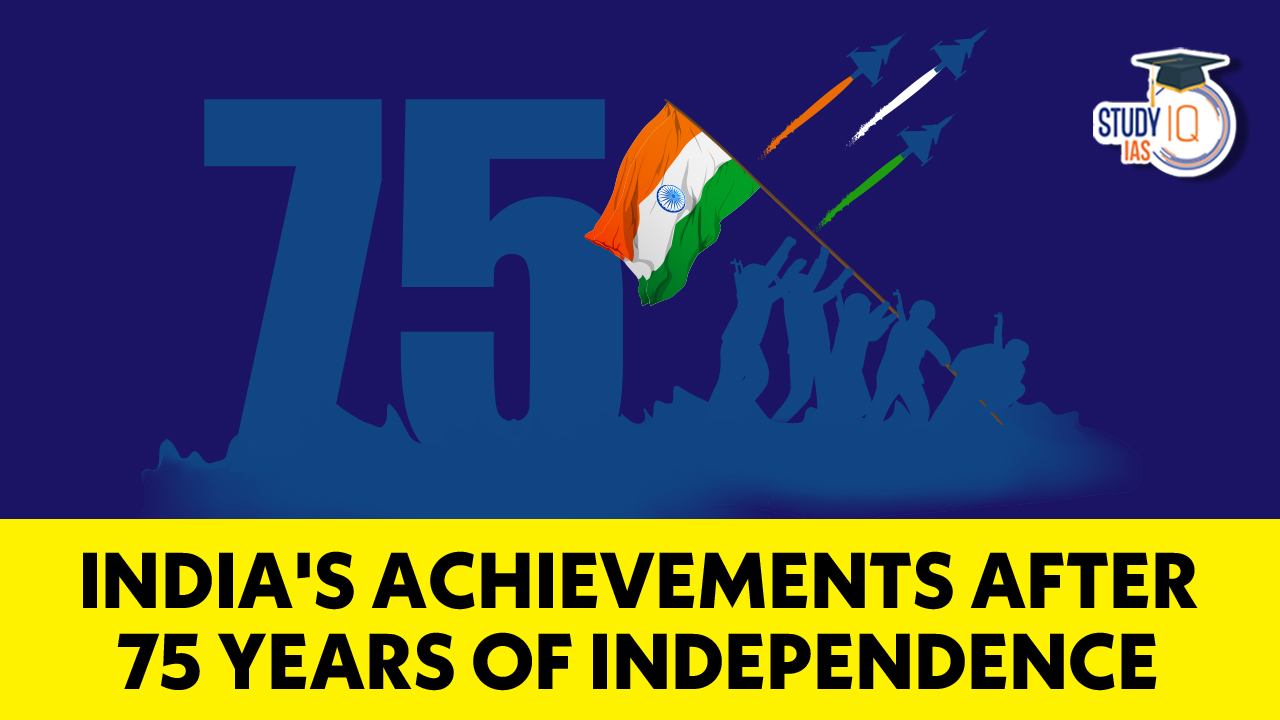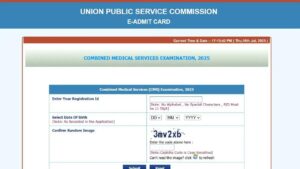Table of Contents
As India celebrates 75 years of independence, it provides a moment to reflect on the nation’s progress and its evolving landscape. This article highlights significant achievements, historical milestones, and ongoing challenges in various sectors, offering a comprehensive overview for UPSC examination preparation.
India’s achievements after 75 years of Independence
India’s journey since gaining independence on August 15, 1947, has been marked by significant milestones and achievements across various domains. Here’s a brief overview of the nation’s progress and accomplishments after 75 years of independence:
| 1947 | 2024 | Notes | |
|---|---|---|---|
| GDP | ₹2.7 lakh crore (3% of global GDP) | ₹180 lakh crore (8.5% of global GDP) | Significant economic growth |
| Road Network | 0.399 million km | 5.2 million km | One of the largest in the world |
| National Highways | 24,000 km | 1,70,000 km | Major expansion |
| Power Generation | 1,362 MW | 4,25,000 MW | Major increase in capacity |
| Rural Electrification | 3,061 villages | 19,227 villages | Comprehensive coverage |
| Literacy Rate | 12% | 75% | Improvement in education |
| Life Expectancy | 32 years | 71 years | Significant increase |
| Doctor-to-Patient Ratio | 0.7 per 1000 | 0.8 per 1000 (compared to WHO’s 2.5) | Needs improvement |
| Startups | 471 | 85,000 | Explosive growth |
75 Years of Independence: The Evolving Landscape of India
As India celebrates 75 years of independence, the nation reflects on its remarkable journey from a post-colonial state to a global powerhouse. This article explores the key milestones and achievements across various sectors, highlighting how India has evolved over the decades.
1. Economic Growth and Development
Early Economic Strategies:
- 1951: The First Five-Year Plan was introduced, focusing on agricultural growth and addressing the immediate post-independence challenges.
- 1991: The economic liberalization era began with significant reforms including privatization and globalization, which transformed India into one of the world’s fastest-growing economies.
Recent Developments:
- GDP: As of 2024, India is the fifth-largest economy globally, with a GDP of approximately ₹180 lakh crore (8.5% of global GDP). This reflects robust economic growth and a significant position in the global economic landscape.
- Startup Ecosystem: India is home to one of the largest startup ecosystems, with approximately 85,000 startups as of mid-2024, demonstrating a thriving entrepreneurial environment.
2. Scientific and Technological Advancements
Milestones in Space Exploration:
- 1963: The launch of India’s first sounding rocket marked the beginning of the Indian Space Program, setting the stage for future advancements.
- 2023: The Chandrayaan-3 mission successfully landed on the Moon’s south pole, a historic achievement in space exploration.
Technological Innovations:
- UPI: The Unified Payments Interface (UPI) has become a significant player in digital transactions, with 11.55 billion transactions worth ₹11.7 trillion in Q1 2024.
3. Infrastructure Development
Historical Growth:
- 1951-2023: India’s road network has expanded from 0.399 million km to 5.2 million km, making it one of the largest in the world. The national highway network grew from 24,000 km in 1969 to 1,70,000 km by 2023.
- Power Generation: The capacity increased from 1,362 MW in 1947 to 4,25,000 MW in 2024, supporting widespread industrial and residential needs.
Recent Updates:
- Rural Electrification: As of early 2024, all 19,227 villages have been electrified, ensuring access to electricity across the nation.
4. Human Development
Education and Health:
- Literacy Rate: Improved from 12% in 1947 to 75% in 2024, reflecting significant strides in educational development.
- Life Expectancy: Increased from 32 years in 1947 to 71 years in 2024, highlighting improvements in healthcare and quality of life.
Healthcare Challenges:
- Doctor-to-Patient Ratio: India has a ratio of 0.8 doctors per 1,000 people compared to the WHO’s average of 2.5, indicating areas for improvement in healthcare access.
5. Social and Political Milestones
Key Events and Achievements:
- 1950: The Indian Constitution came into effect, establishing India as a Republic and laying the groundwork for democratic governance.
- 1966: Indira Gandhi became India’s first female Prime Minister, marking a significant political milestone.
- 2022: Draupadi Murmu was elected as the fifteenth President of India, becoming the first tribal leader to hold the office.
Significant Policies and Reforms:
- 2010: The Right to Education Act (RTE) was enacted, making education a fundamental right for children aged 6 to 14.
- 2017: The Goods and Services Tax (GST) was introduced, simplifying the tax system and integrating the economy.
6. Cultural and Sporting Achievements
Historical Moments:
- 1983: India won its first Cricket World Cup, a landmark achievement in the country’s sporting history.
- 2024: India continued to celebrate its cultural diversity and heritage, contributing to global cultural exchanges and understanding.
Conclusion
As India celebrates 75 years of independence, it stands as a testament to the resilience, innovation, and progress of its people. From significant economic and technological achievements to strides in human development and infrastructure, India has made remarkable progress. Looking ahead, India aims to build on these successes, addressing ongoing challenges and paving the way for a brighter future for its citizens.
| Other Articles related to Independence Day | |
| Revolt of 1857 | Women Freedom Fighters of India |
| Indian freedom struggle | Independence day speech |
| Freedom Fighters of India | Indian National Movement |


 UPSC CMS Admit Card 2025 Out: Download L...
UPSC CMS Admit Card 2025 Out: Download L...
 UPSC Study Material for Prelims & Ma...
UPSC Study Material for Prelims & Ma...
 Nagari Pracharini Sabha Revival: Backgro...
Nagari Pracharini Sabha Revival: Backgro...





















